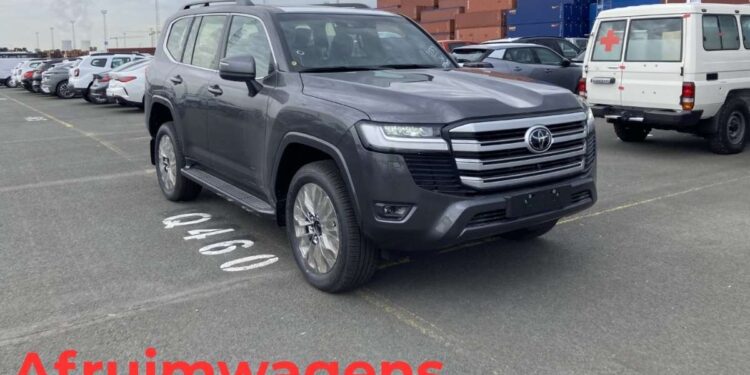Afruimwagens, often referred to as agricultural collection wagons, play a crucial role in the modern farming process. They are designed to make the collection, transportation, and unloading of harvested crops and silage faster, safer, and more efficient. For centuries, farmers have relied on various tools to gather and transport their crops, but with the advancement of technology, Afruimwagens have become a specialized solution that saves time, reduces labor, and ensures that harvested materials reach their intended destination in the best possible condition.
Whether on a small family farm or a large commercial agricultural enterprise, Afruimwagens have become indispensable machines that directly contribute to farming productivity. Understanding their purpose, history, variations, and future potential is essential for anyone considering an investment in this type of equipment.
The Role of Afruimwagens in Agriculture
The agricultural cycle is a demanding process that requires precise timing and efficiency, especially during harvesting seasons. Afruimwagens serve as the link between the field and the storage or processing facility. By attaching these wagons to tractors, farmers can collect cut grass, maize, silage, or hay in large volumes without the need for excessive manual effort. They are equipped with unloading mechanisms that make it simple to deposit the collected material at the desired location. Without Afruimwagens, farmers would face longer harvest times, higher labor demands, and an increased risk of crop spoilage. Their role extends beyond convenience, as they actively contribute to reducing food waste, improving crop management, and streamlining agricultural workflows.
Historical Development of Afruimwagens
The concept of crop collection wagons has been around for centuries, beginning with simple carts pulled by animals. These rudimentary vehicles helped transport harvested materials from fields to barns or storage areas but required enormous physical effort. With the mechanization of agriculture during the industrial revolution, carts evolved into more advanced wagons pulled by tractors. Over time, Afruimwagens became specialized machines equipped with mechanical or hydraulic systems that allowed for easier loading and unloading. Today, they feature precision engineering, larger storage capacities, and durable designs suitable for the demanding nature of modern farming. The evolution of Afruimwagens reflects the broader story of agricultural progress, where innovation has continually replaced manual labor with efficient machinery.
Different Types of Afruimwagens
There are multiple types of Afruimwagens, each designed to serve specific purposes depending on the crop and farming requirements. Silage wagons are among the most common, primarily used for grass and maize silage. These models often feature compacting systems that allow more material to be transported in a single trip, maximizing efficiency. Multi-purpose collection wagons are designed for versatility and can handle a variety of crops, including hay and straw.
Some advanced Afruimwagens also include cutting or chopping mechanisms that process the crop as it is collected, which saves additional time during later processing stages. The choice of Afruimwagen depends on the scale of the farm, the type of crops being harvested, and the level of mechanization a farmer wishes to achieve.
Benefits of Using Afruimwagens in Farming
The advantages of incorporating Afruimwagens into farm operations are extensive. One of the most significant benefits is labor reduction, as they eliminate the need for multiple workers to manually load and transport crops. This is particularly valuable during peak harvest periods when time is critical. Another benefit is efficiency, as large quantities of crops can be collected and transported in fewer trips, reducing fuel consumption and overall costs. By minimizing handling and ensuring quicker transportation, Afruimwagens also help preserve the nutritional quality of silage and other harvested crops. Furthermore, they reduce waste by preventing spillage and crop damage during loading and unloading. For many farmers, the investment in an Afruimwagen quickly pays off through these combined efficiencies.
Factors to Consider When Choosing an Afruimwagen
Selecting the right Afruimwagen requires careful consideration of several factors. Farm size plays a significant role, as smaller farms may only need compact models with limited capacity, while larger operations benefit from heavy-duty wagons capable of transporting large loads. The type of crops being harvested also influences the choice, since some Afruimwagens are optimized for silage while others are better suited for hay or mixed materials. Budget considerations cannot be overlooked, as prices vary widely depending on features such as hydraulic unloading, chopping mechanisms, or automated systems.
Maintenance requirements are another key factor, as durable wagons with easily replaceable parts will prove more cost-effective in the long run. Farmers should also take into account the compatibility of Afruimwagens with their existing tractors and equipment to ensure smooth integration into their workflow.
Maintenance and Longevity of Afruimwagens
Like all farm machinery, Afruimwagens require regular care and maintenance to perform at their best. Cleaning the wagon after each use is essential to prevent residue buildup that could cause corrosion or blockages. Regular lubrication of moving parts ensures smooth operation and prevents mechanical wear. Hydraulic systems should be inspected frequently to identify leaks or damage that may affect unloading mechanisms. Tires, brakes, and other structural components must also be checked periodically, especially before busy harvest seasons.
Farmers who prioritize maintenance not only avoid costly breakdowns but also extend the lifespan of their Afruimwagens, ensuring many years of reliable service. The relatively low maintenance demands of these wagons, when compared to more complex machinery, further increase their value as a long-term investment.
Afruimwagens and Sustainable Agriculture
Sustainability has become a central theme in modern agriculture, and Afruimwa gens contribute positively to this movement. By allowing farmers to transport large volumes of crops in fewer trips, they help reduce fuel consumption and carbon emissions. Their efficiency also ensures that harvested crops are quickly moved from the field to storage, reducing spoilage and waste. Some newer models are even designed with eco-friendly materials and energy-efficient unloading systems, reflecting the broader push toward sustainable machinery. Afruimwage ns also integrate well with other modern farming equipment, creating a streamlined and resource-efficient agricultural process. As the world increasingly prioritizes sustainable farming, Afruimw agens will continue to play a role in helping farmers balance productivity with environmental responsibility.
Cost Versus Value of Afruimwagens
While the upfront cost of Afruimwag ens can be significant, it is important to consider the long-term value they provide. The savings in labor costs alone make them financially worthwhile, especially for larger farms. Additionally, the efficiency they bring reduces fuel expenses and minimizes crop loss, contributing to greater profitability. High-quality Afruimwage ns are built for durability, meaning that the initial investment often translates into many years of dependable service. Farmers must weigh the initial financial outlay against the operational benefits and the return on investment over time. For most, the conclusion is clear: Afruimwa gens provide not just cost savings but also a boost to overall farm productivity and sustainability.
The Future of Afruimwagens in Agriculture
The agricultural sector is rapidly advancing with the adoption of digital technologies, and Afruimw agens are part of this transformation. Future models are expected to include advanced features such as GPS guidance for optimized routes, sensors that monitor crop volume and weight, and automated unloading systems that further reduce the need for manual intervention. Integration with precision farming tools will allow farmers to collect data directly from Afruimw agens, improving crop management and decision-making. These innovations will make farming more data-driven, efficient, and environmentally conscious. As agriculture continues to modernize, Afruimwagens will remain a critical tool, evolving alongside other machinery to meet the changing demands of farmers worldwide.
Frequently Asked Questions (FAQ)
1. What are Afruimwagens mainly used for?
- Afruimwagens are used for collecting, transporting, and unloading harvested crops such as silage, hay, and maize.
2. Are there different types of Afruimwagens?
- Yes, they come in several types, including silage wagons, multi-purpose wagons, and advanced models with cutting systems.
3. Why should farmers invest in Afruimwagens?
- They save time, reduce manual labor, minimize waste, and improve the efficiency of harvesting operations.
4. What factors matter when choosing an Afruimwagen?
- Farm size, crop type, budget, tractor compatibility, and maintenance needs are all important considerations.
5. How do Afruimwagens support sustainability in farming?
- By reducing fuel consumption, limiting crop spoilage, and integrating with eco-friendly agricultural practices.


















